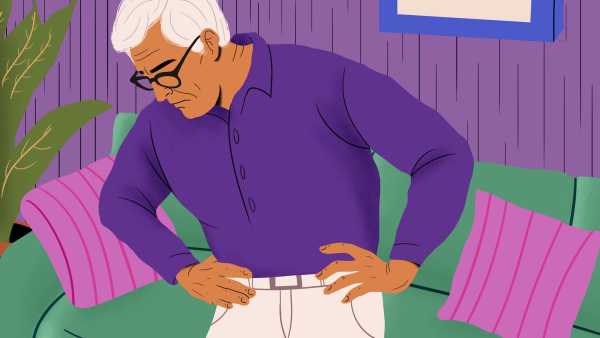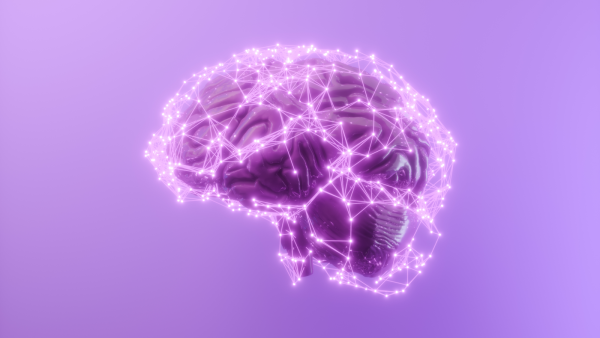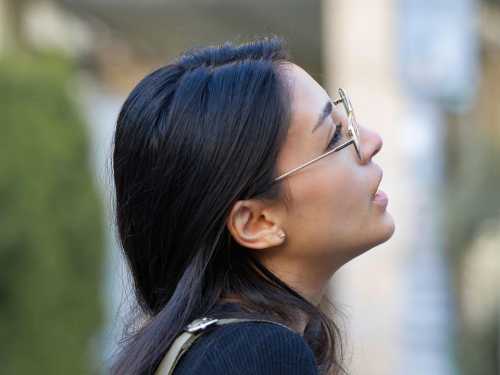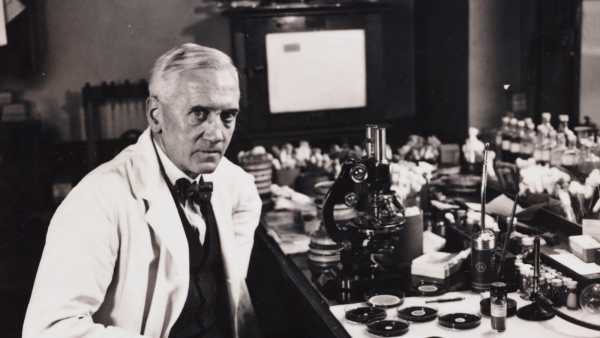
Alexander Fleming poses in his cluttered laboratory in 1943. Piles of petri dishes are visible on the table behind him. While his methods may not have been particularly glamorous, his penchant for leaving petri dishes unattended for weeks led to one of the greatest discoveries in medicine. (Image credit: Daily Herald Archive/SSPL/Getty Images) AT A GLANCE
Milestone: Discovery of penicillin
Date: September 28, 1928
Where: St. Mary's Hospital, London
Who: Scottish microbiologist Alexander Fleming
On September 28, 1928, Alexander Fleming woke up to check his experiments on bacterial growth and accidentally discovered the world's first antibiotic.
The discovery of penicillin occurred when Fleming returned from a two-week vacation. He looked at petri dishes containing Staphylococcus aureus grown from an infected wound. On one of the dishes, Fleming noticed a spot of green mold intersecting golden-yellow colonies of bacteria, according to his assistant, W.D. Allison. Near the green spot, the bacteria were translucent, colorless, and dead. This bacteria-killing substance became the basis for the first antibiotic, although the term itself didn't appear until 1941.
You may like
-
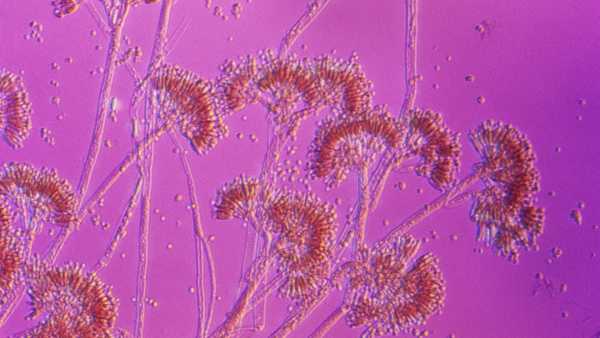
You may not be allergic to penicillin. Here's how to find out.
-
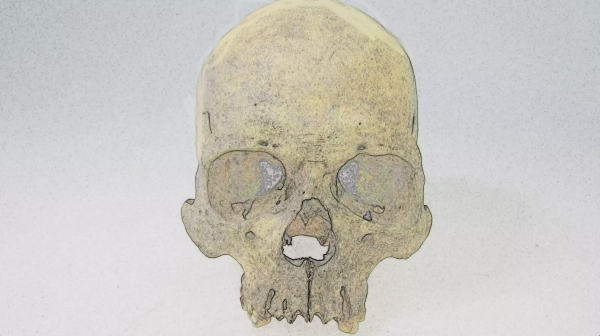
A rare form of leprosy infected people in the Americas before the arrival of Europeans, according to 4,000-year-old bones.
-
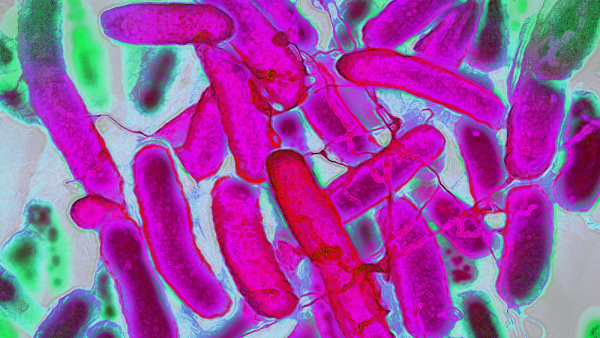
Caffeine may help bacteria resist antibiotics, research shows
“When I woke up just after dawn on September 28, 1928, I certainly didn't plan to revolutionize medicine by discovering the world's first antibiotic or bacteria killer,” Fleming later said. “But I suppose that's exactly what I did.”
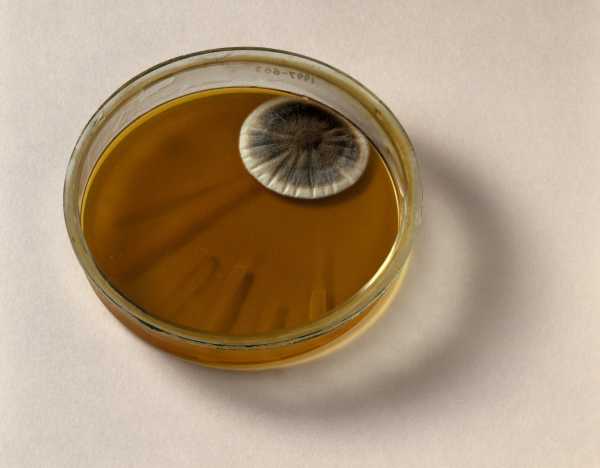
A Petri dish containing bacterial colonies, with a mold called P. notatum growing in the upper right corner. The chemical produced by this fungus will form the basis of the drug penicillin.
Fleming determined that the “mold juice” belonged to a fungus of the genus Penicillium, which he eventually identified as Penicillium. When he reported his discovery to fellow physicians at a meeting the following year, he was met with almost complete indifference. Isolating the elusive “mold juice” also proved challenging, so the discovery was lost for a decade, as Allison wrote in his personal memoirs.
Then, in 1939, scientists Howard Florey and Ernst Chain became interested in the substance. They formed a research team and, together with scientists such as Margaret Jennings, Edward Abraham, and Norman Heatley, succeeded in isolating penicillin from the mold, testing it, and using the yellowish powder to treat several patients. However, the compound was still relatively impure.
In 1942, Fleming treated a young patient seriously ill with meningitis. He discovered that the powder had cleared the bacterial infection and called Florey and Chain to request some, even though it was impure. After Fleming injected the powder into the boy's spinal cord, the patient recovered.
After this miraculous cure, Fleming was convinced that penicillin needed to be mass-produced. He presented this idea to the government, and soon the US and UK joined forces to mass-produce the substance. By 1945, the first antibiotic became widely available.
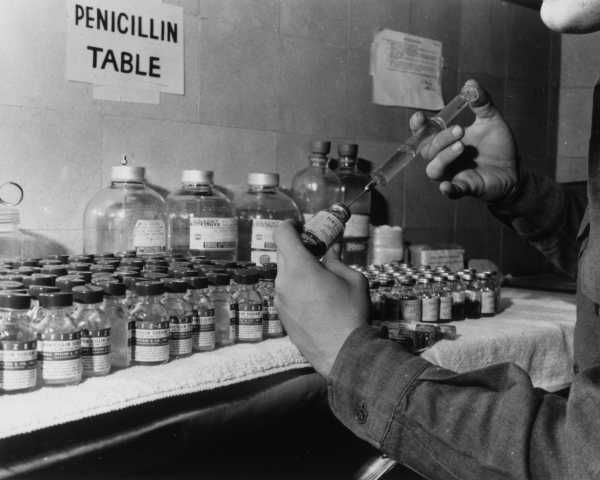
By the 1940s, penicillin was being mass-produced. Here, a man draws up a dose of penicillin with a glass syringe.
Fleming, Florey, and Chain received the Nobel Prize in Medicine in 1945 for their work in discovering, isolating, and producing penicillin. In 1964, Dorothy Hodgkin received the Nobel Prize in Chemistry for establishing its crystal structure, which helped chemists develop later antibiotics.
Since its discovery, penicillin has saved an estimated 500 million lives and, along with its derivatives, remains a mainstay of treatment for a variety of ailments, including ear infections, strep throat, and urinary tract infections.
Penicillin also led to the creation of hundreds of different antibiotics. However, the widespread and misuse of these wonder drugs has led to many bacterial strains developing resistance to common antibiotics, including penicillin. In the arms race against superbugs, scientists are finding entirely new ways to combat bacteria: from harnessing the power of viruses to attack bacteria to using the gene-editing tool CRISPR to develop new drugs.
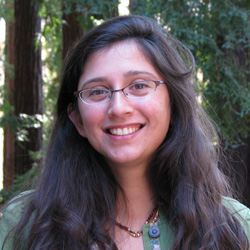
Tia Ghose, Social Link Navigation, Editor-in-Chief
Tia is the editor-in-chief and formerly a senior writer at Live Science magazine. Her work has appeared in Scientific American, Wired.com, and other publications. She holds a master's degree in bioengineering from the University of Washington, a certificate in science writing from the University of California, Santa Cruz, and a bachelor's degree in mechanical engineering from the University of Texas at Austin. Tia was part of the Milwaukee Journal Sentinel team that published the “Empty Cradles” series on preterm births, which won numerous awards, including the Casey Medal for Distinguished Journalism in 2012.
You must verify your public display name before commenting.
Please log out and log back in. You will then be asked to enter a display name.
Exit Read more
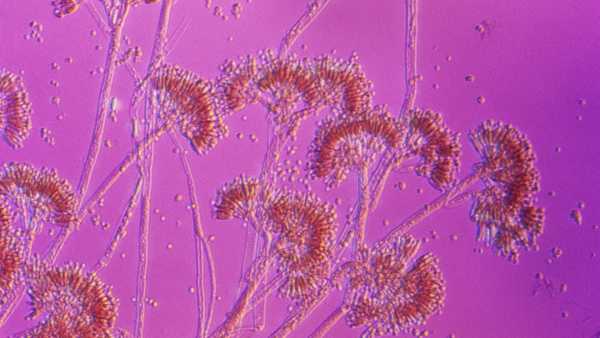
You may not be allergic to penicillin. Here's how to find out.
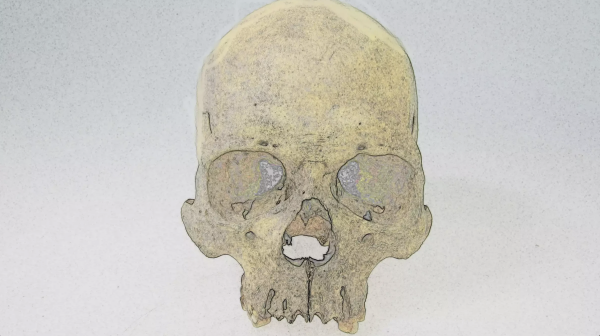
A rare form of leprosy infected people in the Americas before the arrival of Europeans, according to 4,000-year-old bones.
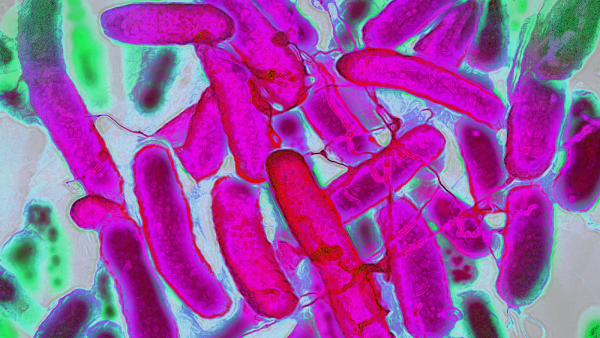
Caffeine may help bacteria resist antibiotics, research shows
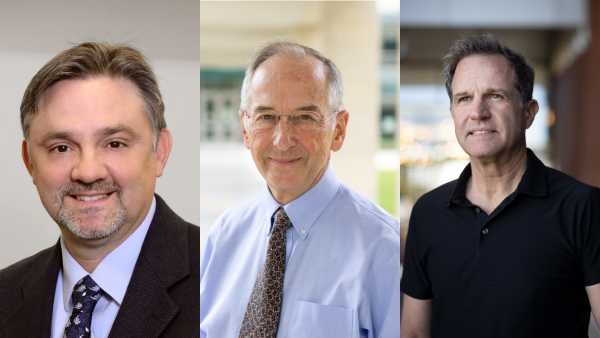
An innovative drug for the treatment of cystic fibrosis, which extends life by decades, has earned its developers an “American Nobel Prize” of $250,000.

The tragic death of gene therapy, which halted the field for a decade, occurred on September 17, 1999.
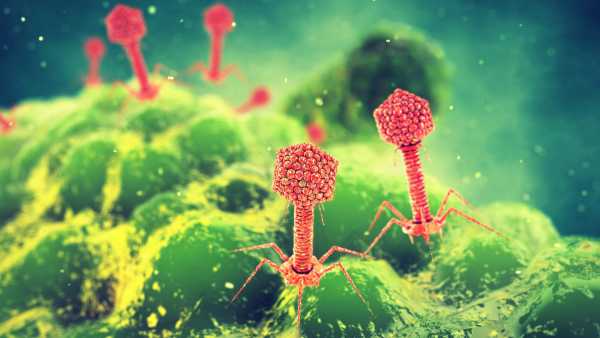
How the battle between viruses and bacteria can help us defeat superbugs
Latest news in the healthcare sector
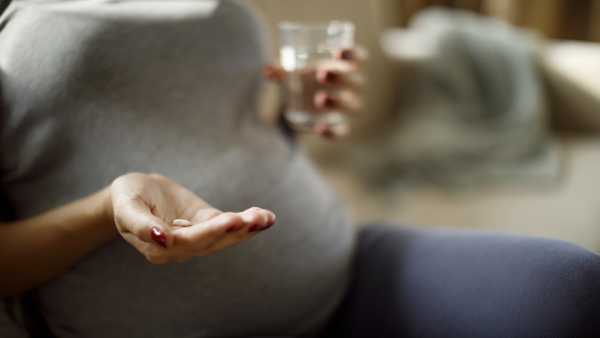
Is acetaminophen safe during pregnancy? Here's what the science says.
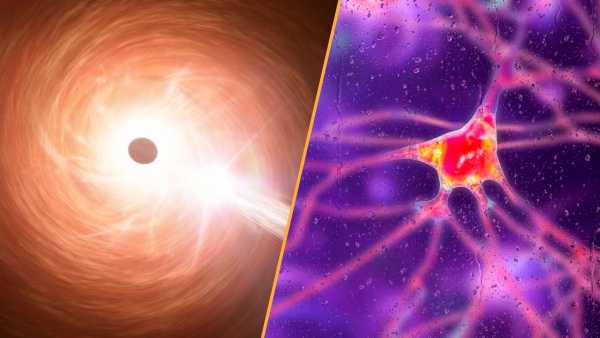
A breakthrough drug for Huntington's disease and a fast-growing black hole that defies the laws of physics.
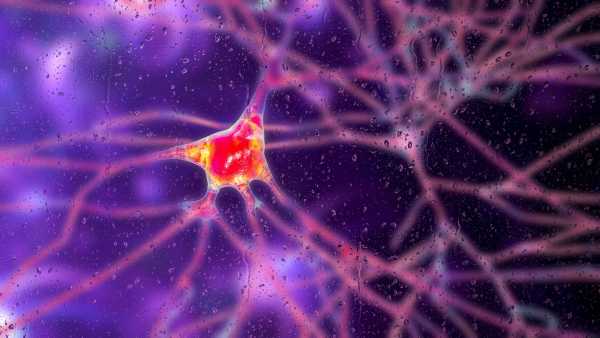
A groundbreaking gene therapy is the first treatment for Huntington's disease that can slow the disease's progression.
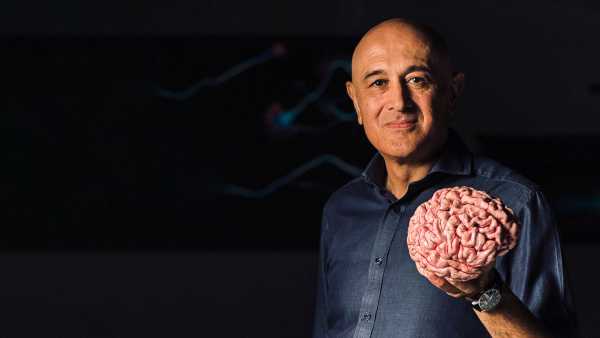
In Secrets of the Brain, Jim Al-Khalili explores 600 million years of brain evolution to understand what makes us human.
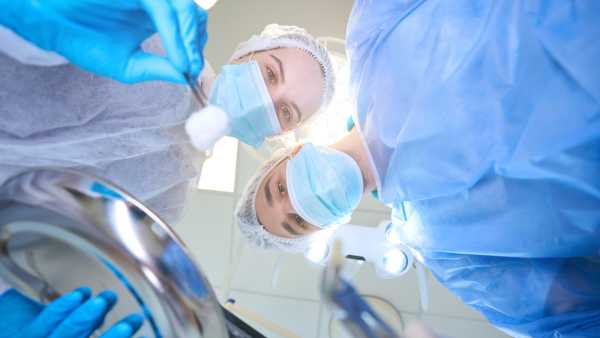
Doctors restored a man's vision by removing a tooth and implanting it in his eye.

Why do medicines taste bad?
Latest features
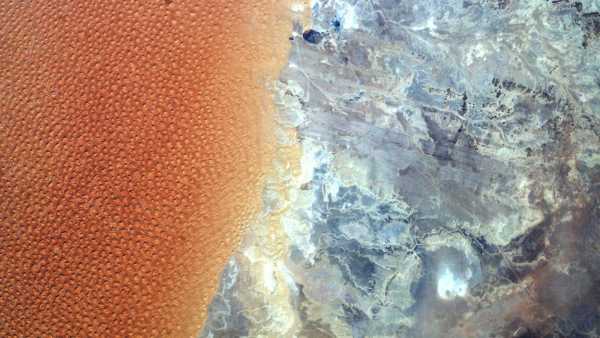
The Sahara Sea's 'star dunes' collide with an otherworldly landscape where two countries meet.
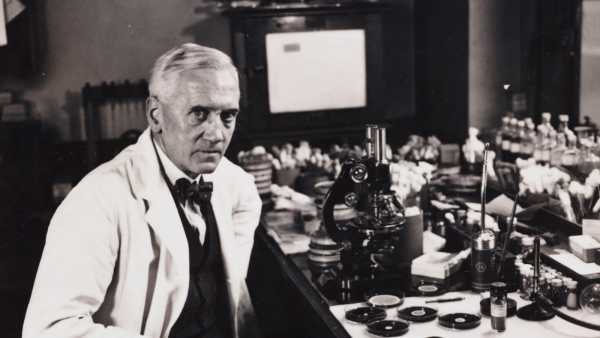
Alexander Fleming wakes up to find strange mold growing in a petri dish and then accidentally discovers the first antibiotic – September 28, 1928
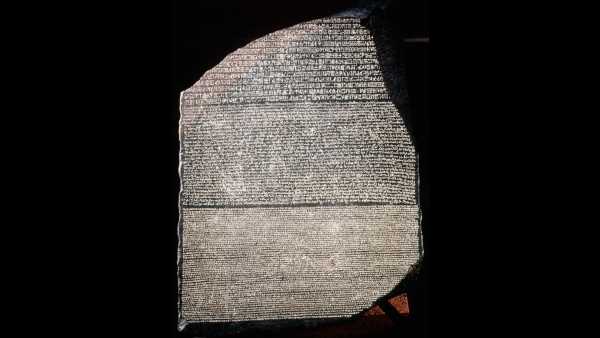
History of Science: Rosetta Stone Deciphered, Opening Window into Ancient Egyptian Civilization – September 27, 1822
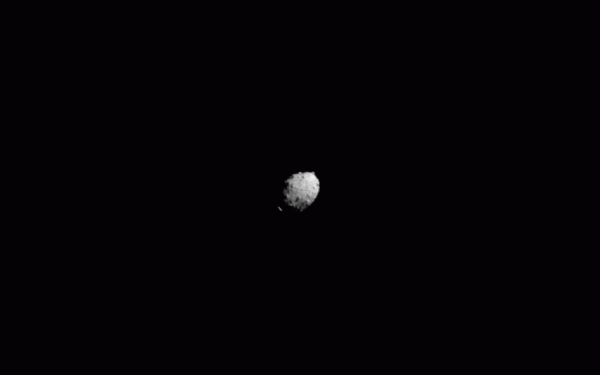
Science Story: DART, humanity's first asteroid deflection mission, hits space rock in the face – September 26, 2022
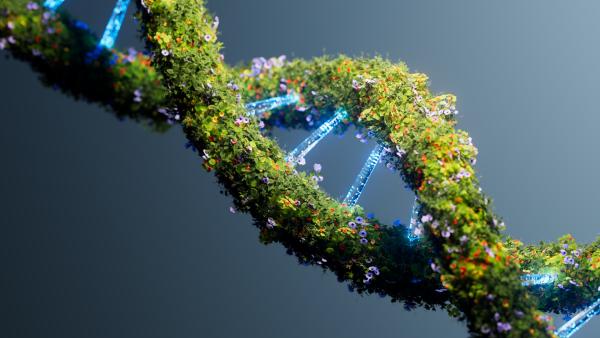
How long does DNA last?
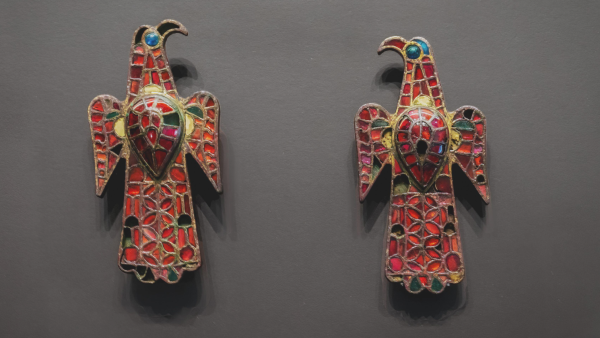
Eagle Brooches: 1,500-year-old pins adorned with dazzling gemstones and glass worn by influential Visigoth women.
LATEST ARTICLES
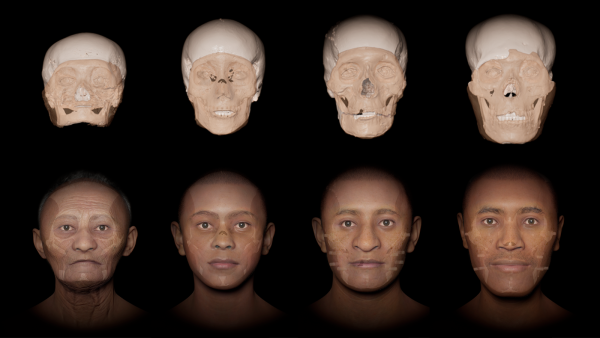
Scientists have used digital technology to remove the “death masks” from four Colombian mummies, revealing their faces for the first time.
Live Science magazine is part of Future US Inc., an international media group and leading digital publisher. Visit our corporate website.
- About Us
- Contact Future experts
- Terms and Conditions
- Privacy Policy
- Cookie Policy
- Accessibility Statement
- Advertise with us
- Web notifications
- Career
- Editorial standards
- How to present history to us
© Future US, Inc. Full 7th Floor, 130 West 42nd Street, New York, NY 10036.
var dfp_config = { “site_platform”: “vanilla”, “keywords”: “type-regular,serversidehawk,videoarticle,van-enable-adviser-
Sourse: www.livescience.com


